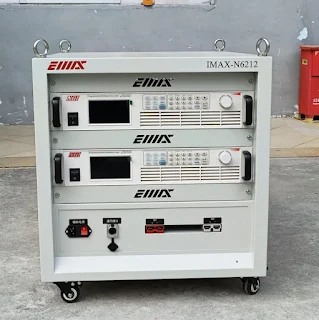What is Load Bank Testing for Generators?
Load bank testing is a crucial process for ensuring the reliability and performance of generators, especially in critical industries where power continuity is vital. For businesses relying on backup generators, such as hospitals, data centers, and industrial facilities, regular testing ensures that the generator will perform as expected during an actual power outage. This blog post will delve into the basics of load bank testing, its significance, and why it is essential for generators.
Understanding Load Bank Testing
Load bank testing involves simulating real-world electrical loads on a generator to evaluate its performance under different conditions. A load bank is a device that mimics the operational load that a generator would experience during regular use. By applying these loads, operators can monitor how the generator responds, checking for issues such as power stability, engine performance, and overall reliability.
Types of Load Banks Used in Testing
There are three primary types of load banks used in testing generators:
Resistive Load Banks: These apply a load that is purely resistive, meaning it simulates the standard electrical load that a generator would typically power. This type is commonly used for testing purposes as it provides a straightforward way to measure the generator's capacity to handle electrical loads.
Reactive Load Banks: Reactive load banks simulate inductive or capacitive loads, which are more complex and represent real-world applications like motors and transformers. They test the generator's ability to handle power factors that differ from a purely resistive load.
Combined Resistive/Reactive Load Banks: These offer a combination of resistive and reactive loads, providing a more comprehensive testing scenario that closely mirrors the conditions the generator will face in actual use.
Why is Load Bank Testing Important?
Load bank testing serves several critical purposes for generator maintenance and reliability:
Preventative Maintenance: Regular load bank testing helps identify potential issues before they become significant problems. It allows operators to catch and address faults like fuel system issues, cooling system inefficiencies, or battery failures before they lead to generator downtime.
Verifying Capacity and Performance: Load bank testing ensures that the generator can operate at its full rated capacity. This is especially important for backup generators that may not regularly run at full load. Testing verifies that the generator can handle the maximum load when required.
Preventing Wet Stacking: Generators running below their capacity for extended periods can experience wet stacking, where unburned fuel accumulates in the exhaust system. Load bank testing helps mitigate this by running the generator at a higher load, burning off the excess fuel, and ensuring the engine runs efficiently.
Compliance and Certification: Many industries and regulations require regular load bank testing as part of compliance. For example, healthcare facilities must adhere to specific standards to ensure their generators are reliable. Load bank testing provides the necessary documentation and assurance of compliance.
How is Load Bank Testing Conducted?
Load bank testing typically follows a structured process:
Preparation: The generator is inspected to ensure it is in good working condition, and any necessary maintenance is performed before the test. The load bank is then connected to the generator.
Testing: The generator is started, and the load bank applies a gradually increasing load. This load is usually applied in increments, allowing operators to observe the generator's performance at different load levels. The test can last for several hours, depending on the generator's capacity and the test's objectives.
Monitoring and Analysis: During the test, key parameters such as voltage, current, frequency, and temperature are monitored. Any deviations from the expected performance are recorded for further analysis. After the test, the results are reviewed to determine if the generator meets the required standards.
Reporting: A detailed report is generated, documenting the generator's performance during the test. This report serves as a record of the generator's condition and is essential for maintenance planning and compliance purposes.
Conclusion
Load bank testing is a vital procedure for ensuring the reliability and efficiency of generators. By simulating real-world conditions, load banks allow operators to identify and address potential issues before they lead to failures during critical moments. Regular testing not only ensures compliance with industry standards but also extends the lifespan of the generator, providing peace of mind for businesses that depend on uninterrupted power.
For businesses looking to invest in high-quality load banks, EMAX Load Bank offers a range of solutions designed to meet the rigorous demands of generator testing. Our products are built to deliver accurate and reliable results, ensuring that your generators are always ready to perform when needed.
Load bank testing is not just about compliance; it’s about safeguarding your business against power failures. Ensure your generators are up to the task with regular load bank testing, and trust in the quality that EMAX Load Bank provides.





Comments
Post a Comment